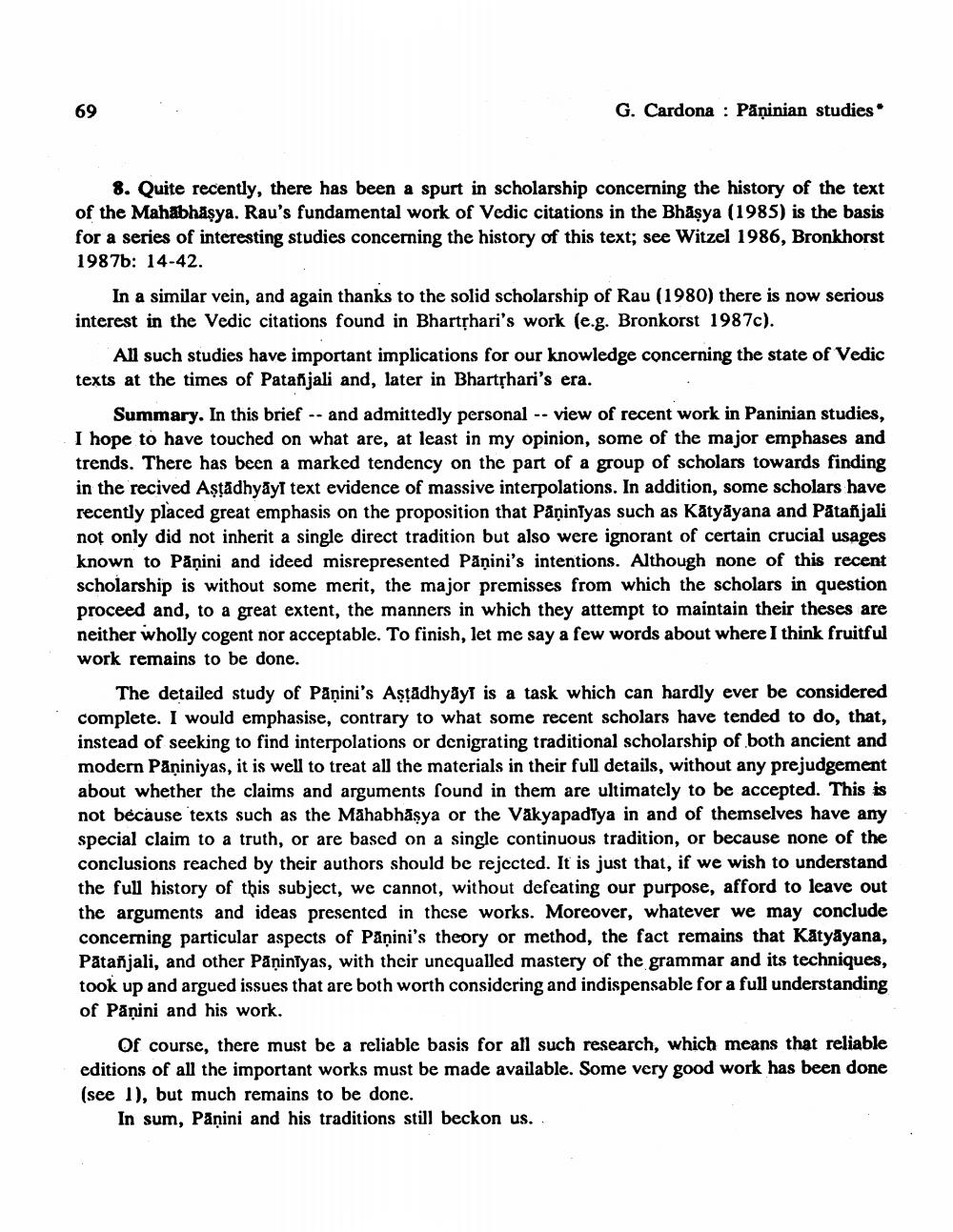________________
G. Cardona : Paninian studies
8. Quite recently, there has been a spurt in scholarship concerning the history of the text of the Mahabhäşya. Rau's fundamental work of Vedic citations in the Bhasya (1985) is the basis for a series of interesting studies concerning the history of this text; see Witzel 1986, Bronkhorst 1987b: 14-42.
In a similar vein, and again thanks to the solid scholarship of Rau (1980) there is now serious interest in the Vedic citations found in Bharthari's work (e.g. Bronkorst 1987c).
Al such studies have important implications for our knowledge concerning the state of Vedic texts at the times of Patanjali and, later in Bhartshari's era.
Summary. In this brief -- and admittedly personal -- view of recent work in Paninian studies, I hope to have touched on what are, at least in my opinion, some of the major emphases and trends. There has been a marked tendency on the part of a group of scholars towards finding in the recived Aştādhyay text evidence of massive interpolations. In addition, some scholars have recently placed great emphasis on the proposition that Påņiniyas such as Katyāyana and Patanjali not only did not inherit a single direct tradition but also were ignorant of certain crucial usages known to Pāṇini and ideed misrepresented Pāṇini's intentions. Although none of this recent scholarship is without some merit, the major premisses from which the scholars in question proceed and, to a great extent, the manners in which they attempt to maintain their theses are neither wholly cogent nor acceptable. To finish, let me say a few words about where I think fruitful work remains to be done.
The detailed study of Paņini's Așțadhyay is a task which can hardly ever be considered complete. I would emphasise, contrary to what some recent scholars have tended to do, that, instead of seeking to find interpolations or denigrating traditional scholarship of both ancient and modern Påņiniyas, it is well to treat all the materials in their full details, without any prejudgement about whether the claims and arguments found in them are ultimately to be accepted. This is not because texts such as the Mahabhāsya or the Vakyapadiya in and of themselves have any special claim to a truth, or are based on a single continuous tradition, or because none of the conclusions reached by their authors should be rejected. It is just that, if we wish to understand the full history of this subject, we cannot, without defeating our purpose, afford to leave out the arguments and ideas presented in these works. Moreover, whatever we may conclude concerning particular aspects of Pāņini's theory or method, the fact remains that Kätyāyana, Patanjali, and other Pāṇintyas, with their unequalled mastery of the grammar and its techniques, took up and argued issues that are both worth considering and indispensable for a full understanding of Pāṇini and his work.
Of course, there must be a reliable basis for all such research, which means that reliable editions of all the important works must be made available. Some very good work has been done (see I), but much remains to be done.
In sum, Panini and his traditions still beckon us.




